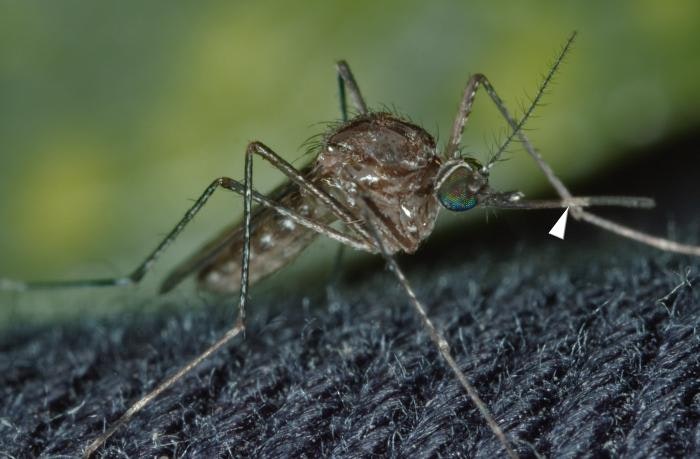Encephalitis Mosquitoes
The Encephalitis Mosquito (Culex tarsalis) is one of 53 types of mosquitoes that occur in California and is found in all California counties. This species has a prominent white band on its proboscis (beak) and white bands on its tarsi (feet). It is further characterized by black scales which form inverted “v’s” on the underside of its blunt-tipped abdomen. The Culex tarsalis mosquito most closely resembles Culex stigmatosoma but has a white band that runs down the length of its hind legs. This species tends to breed in clear, clean, agricultural, industrial, domestic and natural water sources during spring, summer and fall months. Example breeding sites are: poorly maintained swimming pools, ornamental ponds, storm drains, flood control canals, ditches, waste water ponds, containers, pastures, seepages, marshes, seasonal wetlands and duck club ponds.

Diseases Transmitted
The Encephalitis Mosquito is the primary vector of Western Equine Encephalitis and St. Louis Encephalitis (sleeping sickness) in California. Encephalitis Mosquitoes become infected while feeding on birds that harbor the virus. They can then transmit the virus to other animals. This species has been identified as a carrier of West Nile Virus, a mosquito-borne disease that is rapidly spreading across the United States.
Life Cycle
Encephalitis Mosquitoes have four life stages: egg, larva, pupa, and adult. The immature stages need standing water to complete their life cycle. This mosquito can complete its life cycle in 10 to 23 days.
Adult Daily Activity
Adults rest by day in shaded or darkened areas such as animal burrows, treeholes, hollow logs, under bridges, in eves and entry ways of residences, brush piles and dense vegetation. Females pass the winter months in a form of hibernation (diapause) that is not required, which is triggered by short day length and/or ambient temperatures. This inactivity usually occurs from December through February for San Francisco Bay area populations of this mosquito. Significant alterations in the typical winter weather pattern can vary the time spent in diapause (hibernation). Flight activity typically occurs from dusk until dawn with light intensity determining adult mosquito activity. Male mating swarms occur shortly before to just after sunset.
Adult Flight Range
Maximum known distance traveled is 15.75 miles, with females flying up to three miles per night.
Adult Feeding
To obtain energy adult mosquitoes feed on plant juices. To produce eggs female mosquitoes take blood meals from other animals. The preferred hosts are birds although the host feeding pattern does change with the season and host availability. Nesting birds are the primary hosts during spring and early summer with a switch to mammals (e.g. rabbits, dogs, and humans) during the late summer and fall.

Source: CDC PHIL
Eggs and Larvae
Clusters of glued together eggs, also known as egg rafts, are laid directly on the water. Eggs usually hatch within a few days. Larval development usually takes one to three weeks depending on weather conditions, water temperature, and competition for food resources. Larvae have been found in brackish water with salinities of 10 ppt (almost 1/3 that of seawater). Females of this species can produce eggs without a blood meal (known as autogeny) although egg production is reduced when this happens.
